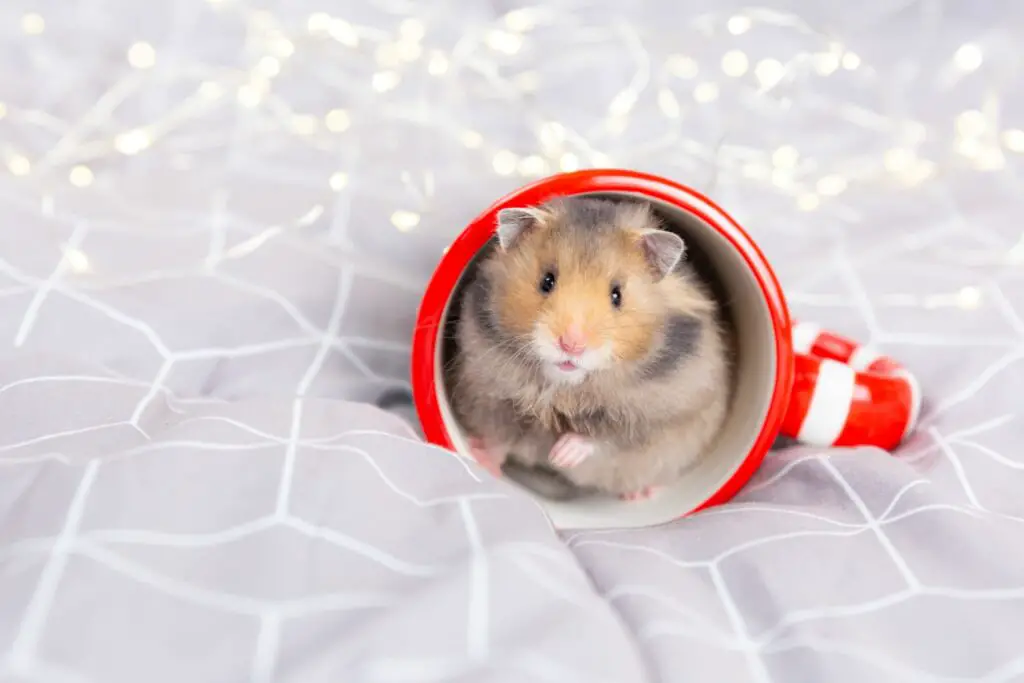Hamsters are adorable and popular pets that bring joy to millions of people around the world. These tiny rodents are known for their cute faces, fluffy bodies, and playful personalities. However, as a veterinarian, I have noticed that many hamster owners are puzzled by the behavior of their furry friends. One of the most curious things that hamsters do is freezing in place. In this blog post, we will explore the reasons behind this behavior and what you can do to help your hamster feel safe and comfortable in their environment.

Hamster behavior and instincts
Explaining the fight or flight response
Hamsters, like many other animals, have a natural response to perceived danger that is commonly known as the fight or flight response. This instinctual response helps animals to defend themselves or run away from danger. When a hamster senses a threat, their body releases hormones such as adrenaline and cortisol, which prepare their body for action.
When do hamsters freeze in place?
One of the ways that hamsters respond to danger is by freezing in place. This is a common behavior that is observed in many animals when they feel scared or threatened. Hamsters will often freeze when they sense danger and stay completely still for a few moments, as if hoping that the danger will go away.
How does freezing in place help hamsters?
While freezing in place may seem like a strange behavior to us, it actually serves an important purpose for hamsters. By staying still and not moving, hamsters reduce their chances of being detected by predators. Many predators are attracted to movement, so by staying still, hamsters can blend into their environment and avoid detection.
What triggers the freezing response in hamsters?
The freezing response in hamsters is triggered by a variety of factors, including loud noises, sudden movements, and unfamiliar environments. Hamsters are also sensitive to changes in lighting and temperature, which can cause them to freeze in place.
Environmental factors
How lighting affects hamster behavior
Hamsters are crepuscular animals, which means that they are most active during dawn and dusk. They prefer low levels of light and can become stressed if exposed to bright lights for long periods of time. It is important to provide your hamster with a safe and comfortable environment that includes plenty of hiding places and areas of low light.
Effects of temperature on hamster behavior
Hamsters are sensitive to changes in temperature and can become stressed if their environment is too hot or too cold. It is important to keep your hamster’s cage in a temperature-controlled area of your home and to provide them with plenty of bedding and nesting material to keep them warm and comfortable.
How noise affects hamsters
Hamsters are easily startled by loud or sudden noises, which can cause them to freeze in place. It is important to keep your hamster’s environment as quiet as possible and to avoid sudden movements or loud noises around them.
Training hamsters not to freeze
Positive reinforcement techniques
Training your hamster not to freeze in place can be a difficult task, but it is possible with patience and positive reinforcement techniques. Reward your hamster with treats and praise when they stay relaxed and calm in their environment.
Identifying triggers of freezing in hamsters
One of the most important things you can do to help your hamster feel safe and comfortable is to identify the triggers that cause them to freeze in place. This may include noises, sudden movements, or unfamiliar objects. Once you have identified these triggers, you can work on desensitizing your hamster to them.
Creating a safe and stress-free environment for your hamster
Providing your hamster with a safe and stress-free environment is one of the best things you can do to prevent freezing behavior. This includes providing them with plenty of hiding places, areas of low light, and a comfortable temperature.
Treatment options for stressed hamsters
Behavior modification techniques
If your hamster is exhibiting signs of stress or anxiety, there are a variety of behavior modification techniques that can be used to help them feel more relaxed and comfortable. These may include desensitization exercises or counterconditioning techniques.
Use of calming agents
In some cases, your veterinarian may recommend the use of calming agents to help your hamster feel more relaxed and calm. These may include pheromone sprays or medications that are specifically designed to reduce stress and anxiety in hamsters.
When to seek veterinary care for your hamster
If your hamster is exhibiting signs of stress or anxiety, it is important to seek veterinary care as soon as possible. Your veterinarian can perform a physical exam and recommend appropriate treatment options to help your hamster feel better.
Conclusion
In conclusion, freezing in place is a common behavior that is observed in hamsters when they feel scared or threatened. This behavior is triggered by a variety of factors, including loud noises, sudden movements, and unfamiliar environments. Providing your hamster with a safe and stress-free environment, identifying triggers of freezing behavior, and using positive reinforcement techniques can all help to reduce stress and anxiety in your furry friend.
Practical tips for hamster parents
If you are a hamster parent, here are some practical tips to keep in mind: provide your hamster with a safe and comfortable environment, avoid sudden movements or loud noises around your hamster, and seek veterinary care if your hamster is exhibiting signs of stress or anxiety. Remember, with patience and love, you can help your hamster to feel safe, happy, and loved in their environment.
- How Long Do American Eskimo Dogs Live? Important Factors and Care Tips - September 29, 2023
- Do American Bulldogs Need Grooming? Essential Tips and Care Guidelines - September 29, 2023
- Do Bengal Cats Enjoy Playing? Essential Tips for Keeping Them Active - September 29, 2023